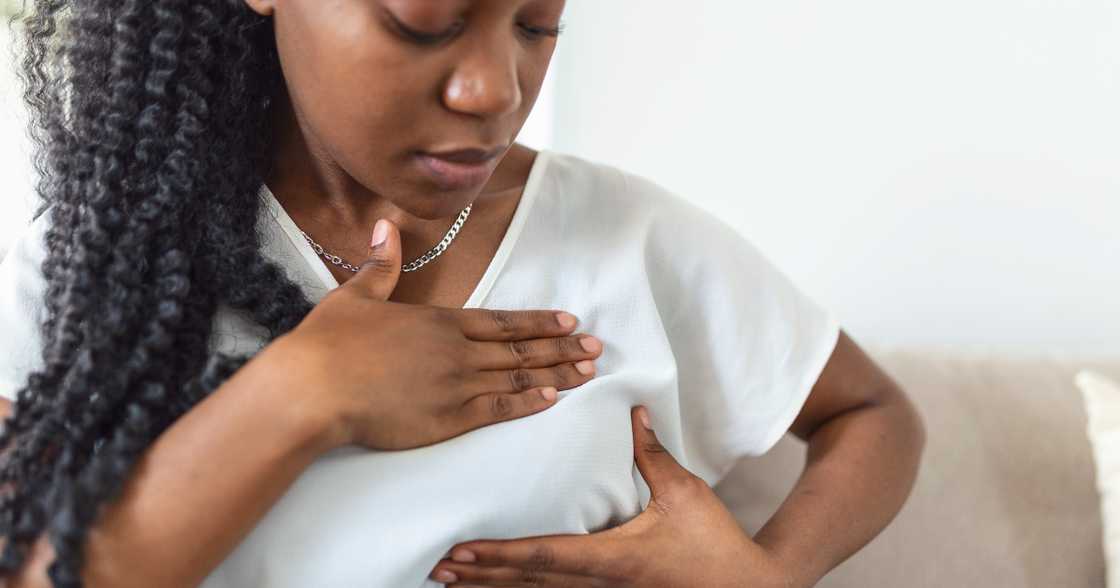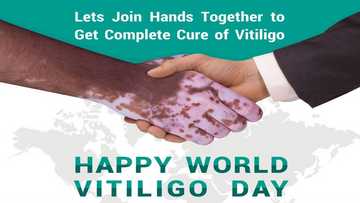Breast Cancer Among Women: First Discovery, Causes, Symptoms, Treatment Options and How to Avoid Occurrence
Breast cancer awareness has been trumpeted over the years by various health practitioners and individuals across the world.
PAY ATTENTION: Click “See First” under the “Following” tab to see YEN.com.gh News on your News Feed!
The first case of breast cancer was recorded in the year 1600 BC in ancient Egypt.
This grade of cancer is the most invasive type of cancer in women and the leading cause of death.
It is therefore important for women and men alike to be aware of all there is to know about the disease.

Source: Getty Images
Types of breast cancer
A research study by the American Cancer Society indicates that the various types of breast cancer is dependent on the specific cells in the breast that are affected or the extent to which the cancer has spread.
Download YEN's news app on Google Play now and stay up-to-date with all major Ghana news
Ductal or lobular carcinoma
This is the most common type of breast cancer. It is specifically called adenocarcinima when it forms in the breats.
It begins in the cells in the milk duct or the glands in the breast that produces the milk (lobules).
Ductal carcinoma in situ
This type of breast cancer starts initiates in the milk duct.
Invasive breast cancer
These are all types of breast cancers that have migrated to near by breast tissues.
Triple-negative
It is a rare and aggresive type of cancer where the cells lack estrogen or progesterone receptors and also lacks a protein called HER2.
Triple-negative affects about 10-15 percent of individuals with breats cancer, Healthline reported.
Inflammatory breast cancer
This is a type of invasive breast cancer which is aggressive in nature and blocks lymph vessels in the skin resulting in an inflamed breast.
Causes of breast cancer
According to Medical News Today, the cause of breast cancer can be attributed to DNA damage or genetic mutation.
Signs and Symptoms
A research work by Healthline shares that the early stages of breast cancer may be accommpanies by no symptoms and the size of the tumor may be too small to be felt. It is therefore imperative for the female to pay attention to their body inorder to quickly notice any changes.
The following are some of the signs one needs to look out for;
- Pain in the breast
- Blood from the nipples
- Unusual discharge from the nipples which is not breast milk
- Experiencing peeling, flaking or scaling of the breast
- Unusual change in the size of the breast
- Changes in the colour of the breast and nipples
- Swelling or lumps in the armpit
- Swollen breast
- Inverted nipples
Breast cancer stages
The stage of a cancer is determined by the size of the tumor and the extent of the spread.
There are four more stages which are described below;
Stage 0
Here, the cancerous cells are only found inside the ducts and have not spread to neighbouring tissues.
Stages 1
This stage has two substages; Stage 1A and 1B. For 1A, the tumor is about 2 centinmeters in size and has not affected any lymph nodes and for 1B, the cancer is located in a nearby lymph node.
Stage 2
At this point, the tumor has began spreading to nearby lymph nodes and it is 2-5 cm in size.
Stage 3
The tumor has grown to 5 cm across and has migrated to a number of lymph nodes,
Stage 4
This is the final stage where the cancer has spread to distant organs which usually include the liver, lungs, brain and bones.
Who stand at risk of developing breast cancer
Dr Abena Bonsu, an Oncologist in an interview with YEN.com.gh shared some of the factors that make an individual prone to breast cancer;
"A number of factors influence one's chances of being diagnosed with breast cancer; genetics, age, dense breast tissue, body weight, alcohol consumption, exposure to radiations, hormone treatment, cosmetic implants among others", she said
The Oncologist shared detailed explanation on some of the risk factors.
Age
When it comes to age, Dr Bonsu explained that one's chances of being diagnosed with the cancer increases with age.
Genetics
Having some type of mutations increases the chance of developing breast cancer. These genes can be inherited hence if a close relative has or has had breast cancer in the past, one also stand a chance of developing breast cancer.
Women are therefore advised to go in for regular check ups if they have an existing family history.
High body weight
Having a heavy weight after menopause can greatly contribute to developing breast cancer because at that point estrogen levels are greater.
Exposure to radiation
Being in contact with radiation treatment can increase one's risk of later developing breast cancer in life.
The origin of 'No Bra Day'
In an earlier publication, YEN.com.gh reported that No Bra Day is observed every year by most women across the world.
The month of October is set aside every year for breast cancer awareness and on the 13th day of the month, women across various age groups are encouraged to go braless. In recognition of the day, YEN.com.gh has put together four interesting facts about 'No Bra Day'
How it came about
The day takes its roots from a medical event held in Toronto Canada on October 19, 2011, organized by a plastic surgeon known as Dr Mitchell Brown.
The theme of the event was 'Breast Reconstruction Awareness (BRA) Day as it was intended to encourage breast cancer survivors to consider reconstructive surgery.
The change in names
The phrase 'No Bra Day' came into existence after an anonymous person who used the name Anastasia Doughnuts came up with the idea to turn BRA Day into a No Bra Day where women can enjoy being braless and become more aware of the symptoms of breast cancer.
The initial day of observance
The day was initially observed on July 9, 2011, and it continued until 2013. Through various social media posts, both July 9 and October 13 were recognized as the No Bra Day. Since 2015 however, the day has only been observed on the 13th Day of the Breast Cancer awareness month.
Our manifesto: This is what YEN.com.gh believes in
Source: YEN.com.gh





